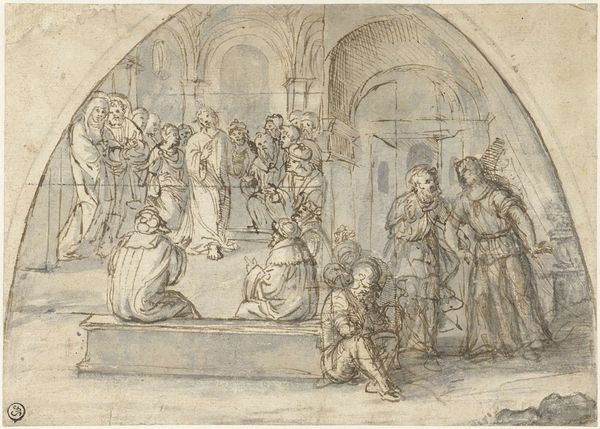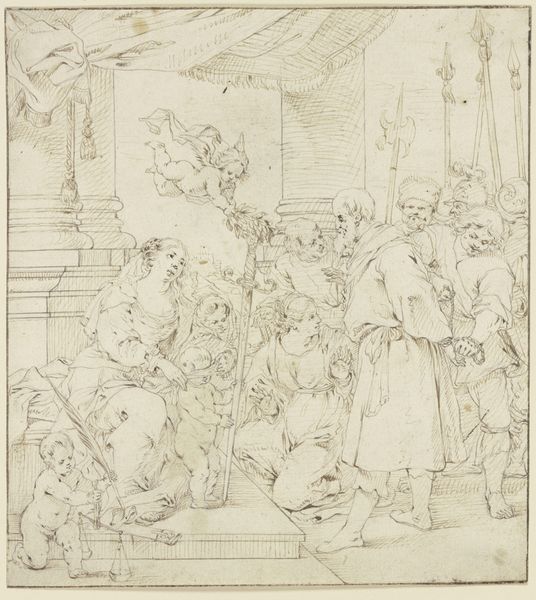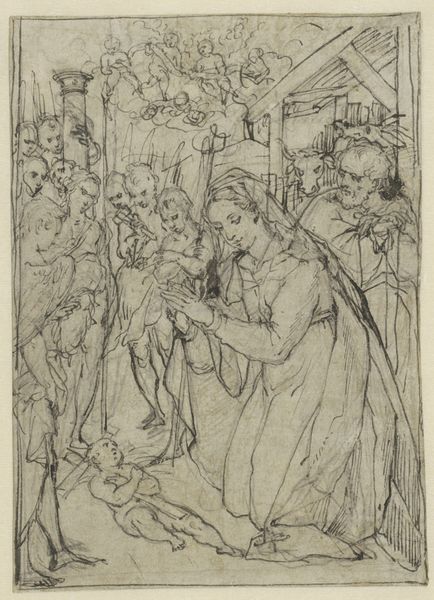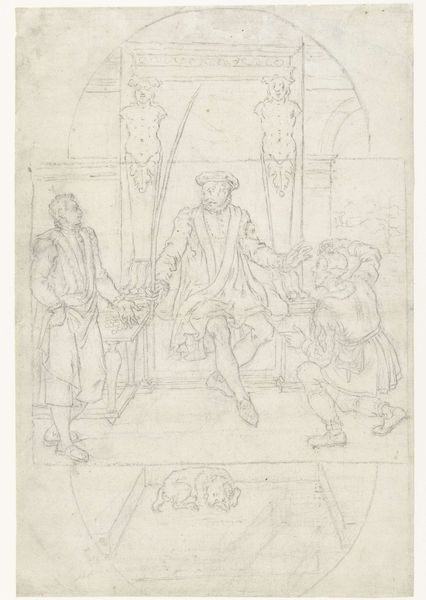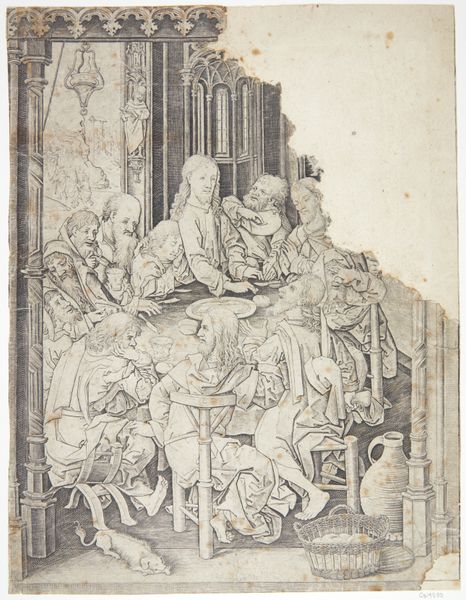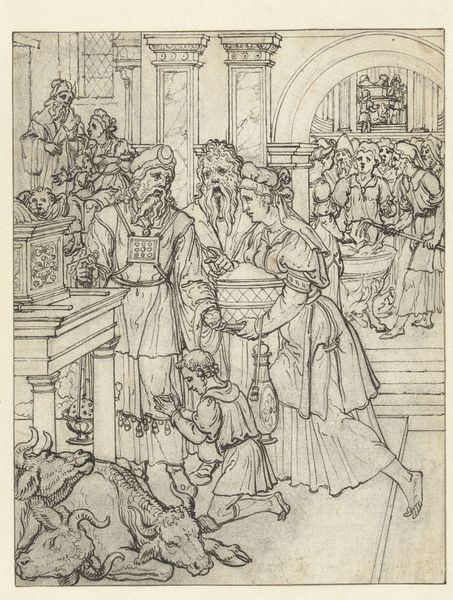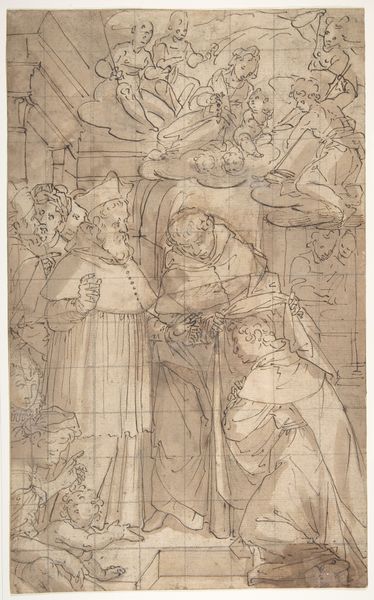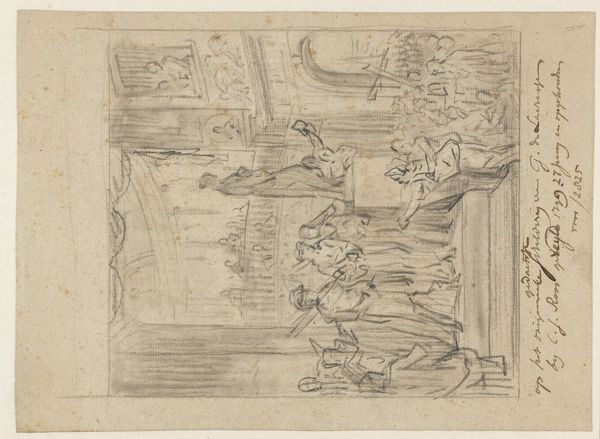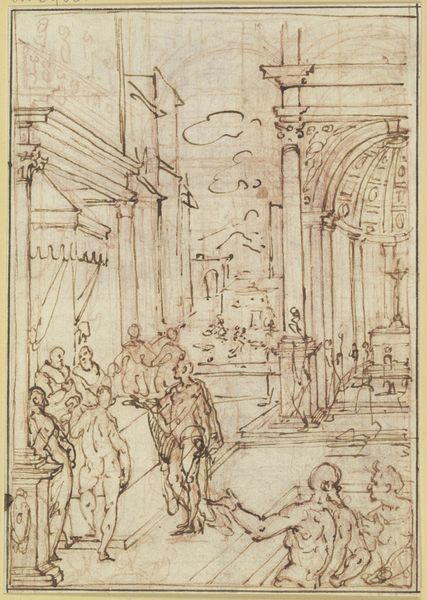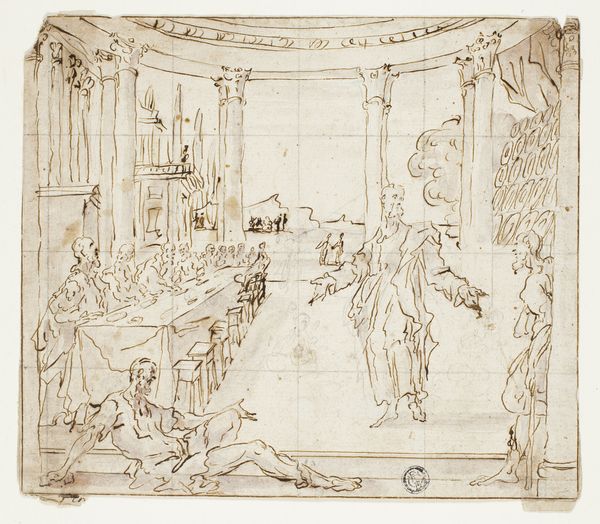
drawing, pen
#
drawing
#
narrative-art
#
pen illustration
#
figuration
#
11_renaissance
#
pen
#
genre-painting
#
history-painting
#
northern-renaissance
Dimensions: height 213 mm, width 202 mm
Copyright: Rijks Museum: Open Domain
Editor: This pen drawing, made in 1517 by an anonymous artist, is titled *Esther wird door Ahasverus gekroond,* or *Esther Crowned by Ahasuerus*. It's a busy composition, but I’m initially struck by the way all eyes in the crowded scene are drawn to the kneeling figure of Esther. What symbolic meanings are embedded in this historical moment? Curator: It is a powerful depiction of a story rich with symbolism, isn’t it? Consider how crowns historically represent not only power, but also divine approval. In this scene, we have Ahasuerus bestowing the crown, symbolizing a transfer of authority, a changing of the guard, if you will. Think of the emotional weight such an image would carry, particularly when referencing a queen celebrated for her bravery and intervention on behalf of her people. What visual cues suggest Esther’s virtue to you? Editor: Well, her kneeling position shows humility. Also, the slight bow of her head…it's deferential, right? Curator: Precisely. That visual language of submission and piety would be instantly readable to a Renaissance audience. Beyond the religious narrative, how might this scene be understood through a cultural lens? Are there other interpretations connected to this iconography? Editor: Hmm… maybe it's a subtle commentary on gender roles and power dynamics within royal courts. Even though Esther is being crowned, she initially gains influence through her appeal to the king's emotions. So there are symbols of virtue, such as the posture, but there are complex societal issues underlying the religious message. Curator: Absolutely. And consider the presence of the dog – often a symbol of loyalty and faithfulness. Its inclusion here could underscore Esther’s unwavering commitment to her people. These layered meanings offer a glimpse into the intricate symbolic language of the Renaissance. It provides insight into social memory that images create and recreate over time. Editor: I hadn’t thought about the dog! I appreciate how unpacking just one symbolic element opens up a whole new avenue for understanding the piece and the historical period it reflects.
Comments
No comments
Be the first to comment and join the conversation on the ultimate creative platform.


